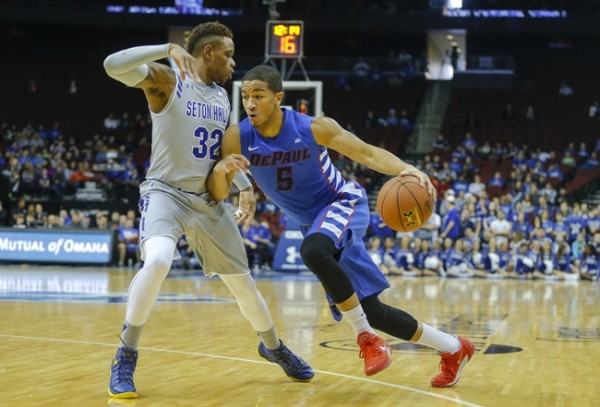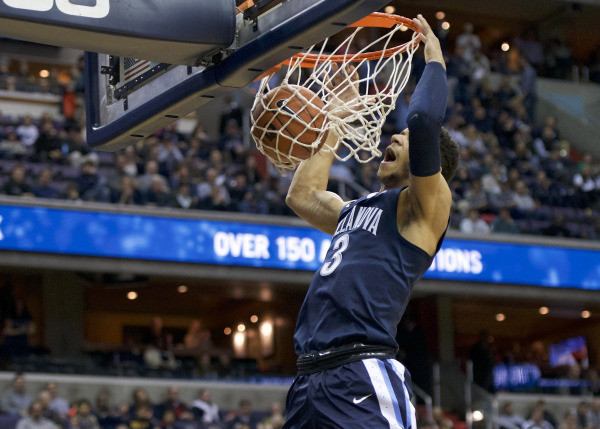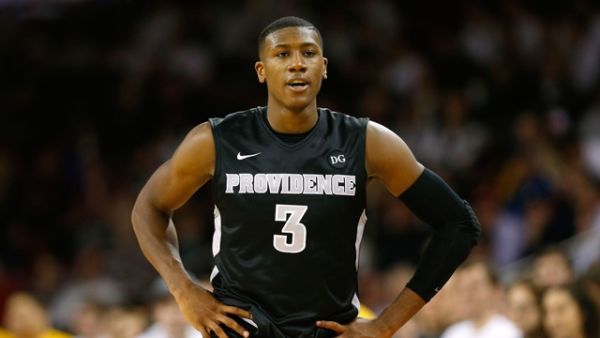Otskey’s Big East Observations: Scouting Big East Tournament Teams
Posted by Brian Otskey on March 9th, 2016With the NCAA Tournament only one week away, let’s take a look at the five Big East teams likely to earn a bid from a scouting perspective. Matchups play a major part in whether a strong team makes an early exit or an average team makes a deep March run. This is magnified more than ever in the pressure cooker that is the NCAA Tournament as teams encounter opponents and styles of play they are largely unfamiliar with. Conversely, some of these teams may flourish once they’re free of the grinder that is the regular season in the Big East.
Villanova
- Why the Wildcats can go deep: Jay Wright’s team is incredibly balanced and cohesive on both sides of the ball. An elite defensive squad, Villanova leads the Big East in allowing only 63.3 PPG. That alone will keep this group in games against any team in the nation. They are known for their defense, but the Wildcats don’t seem to get enough credit nationally for their offensive prowess. They feature an experienced floor general in Ryan Arcidiacono, a versatile wing in Josh Hart and a savvy big man in the middle in Daniel Ochefu. Another thing Villanova does incredibly well that should come in handy in the NCAA Tournament is free throw shooting. It leads the nation with a 77.9 percent mark from the charity stripe. Mounting a comeback against the Wildcats in the final minute is often a futile endeavor.
- Why they’re vulnerable: If the pressure of expectations for this group of players wasn’t enough, there are some clear issues that will present a major matchup problem against the wrong opponent. The early story for Villanova will be overcoming past failures. Fair or not, this group of players has the added pressure of getting that monkey off their collective backs. The team that best matches up with Villanova will be able to match its toughness, is likely to feature athletic guards and wings that clog up driving lanes and pressure the basketball. It will also boast a powerful front line. Outside of Ochefu, Villanova is undersized and very thin in the frontcourt. The Wildcats also have a tendency to beat themselves by relying too heavily on the three-point shot. This Villanova team is better equipped to advance in the NCAA Tournament than past editions, but many of the same vulnerabilities remain a concern.
- Best case: Final Four.
- Worst case: Round of 32.
Xavier
- Why the Musketeers can go deep: Perhaps the most complete team in the Big East from one through five, Xavier will be a tough out for any team it encounters over the next few weeks. The Musketeers sport by far the best rebounding margin in the Big East at +7.5, which is 3.5 rebounds per game ahead of the next best team. Chris Mack’s squad has a nice blend of experience and young talent to pair with solid doses of toughness and playmaking ability. Xavier is an aggressive, high possession team that excels in transition and gets to the free throw line often. Freshman Edmond Sumner has done an outstanding job running the point. At 6’6”, his length and athleticism present a challenge for any defender. Sumner utilizes his quickness and hops well, and has shown the ability to explode to the rim and finish. Defensively, Xavier’s 1-3-1 zone has garnered a lot of attention. The biggest piece of that is J.P. Macura occupying the top of the zone. The 6’5” Macura is an absolute pest because of his length and quickness. Similar to most of his teammates, he is as tough as they come and never afraid of a challenge. Getting into your offense when contending with Macura at the top of the zone may be the most difficult thing any Musketeers opponent has to contend with.
- Why they’re vulnerable: In order to beat Xavier, you must slow them down and make them play a halfcourt game. This is difficult for most teams to pull off because they must control the rebounding battle while simultaneously being patient and smart enough to run good offense against a group of strong defenders. That said, the Musketeers can be exposed on the defensive end. Despite a strong frontcourt of James Farr and Jalen Reynolds, shot blocking is not Xavier’s bread and butter. The four teams to beat Xavier during the regular season were all able to get to the rim without much hassle and shot over 50 percent from two-point range. Smart, patient ball movement is essential, especially when Xavier is in the 1-3-1. The Musketeers want to get out and run, so the longer you make them defend, the better your chances of scoring in the halfcourt and keeping them out of transition.
- Best case: Final Four.
- Worst case: Round of 32.
Seton Hall

Derrick Gordon’s leadership has catapulted Seton Hall to what will be its first NCAA bid in 10 years. (Photo: USA TODAY Sports)
- Why the Pirates can go deep: The Hall has many traits of a sleeper team in your bracket: elite defense, athleticism, toughness, and a star player who can turn on the afterburners and take over a game (Isaiah Whitehead). Kevin Willard’s team is relentless on the offensive boards and constantly looks to attack the rim offensively. Oftentimes the best offense for this team is a missed shot, as players like Angel Delgado are there to clean up misses and turn them into points. But the real strength of this team is its defense. The Pirates are solid across the board in nearly every major defensive category, but none more so than field goal percentage defense at the rim. Seton Hall is seventh nationally in this statistic, per hoop-math.com. Elsewhere on the defensive end, Derrick Gordon has proven to be a lockdown perimeter defender and sophomore Ismael Sanogo has also been a massive key to Seton Hall’s defensive success. In just one year, Sanogo has gone from an end of the bench player to one of the Big East’s best defenders. When Seton Hall brings intensity and toughness defensively, it is difficult to beat. Its style of play will be jarring to many non-Big East opponents.
- Why they’re vulnerable: Willard’s starting lineup of five sophomores naturally leads you to believe that experience may be a concern, especially since they have never played in the NCAA Tournament. Only Gordon, a graduate transfer, has Tournament experience. Similar to Villanova and Xavier, beating Seton Hall necessitates matching its toughness and defensive intensity. The Pirates are not a highly efficient offensive team and the best approach is to pack the paint and dare them to beat you from beyond the three-point line. While Whitehead, Desi Rodriguez and Khadeen Carrington are capable shooters, only Whitehead can truly create his own shot. Seton Hall is not a deep team as only seven players see the vast majority of available minutes, so foul trouble (especially involving Delgado and Whitehead) can also create a host of issues for Willard. Getting Delgado in foul trouble and/or limiting his offensive production usually correlates to a Seton Hall loss. In the Hall’s 22 wins, Delgado has averaged 11.0 PPG and 10.9 RPG, compared to 7.8 PPG and 6.2 RPG in eight losses.
- Best case: Elite Eight.
- Worst case: One and done.
Providence
- Why the Friars can go deep: When you have two sure-fire NBA prospects like Kris Dunn and Ben Bentil, you can make a run. When the supporting cast steps up, this is a scary team. Dunn can take over the game on both ends of the floor, while Bentil is a stretch four who isn’t afraid to mix it up in the low post as well. Both players are incredibly difficult to stop when they’re on a hot streak. The Friars rely on a strong defense and a good turnover margin to keep them in games, while allowing Dunn and Bentil to take over when necessary. Providence is at its best when Dunn is breaking down defenses and making everyone else — including Bentil — better. However, for the Friars to get the most out of this March, Rodney Bullock and Kyron Cartwright will have to make shots. When opposing defenses have to worry about the complementary parts, it makes Dunn and Bentil even more dangerous than they already are.
- Why they’re vulnerable: Despite having two great players, Providence has struggled offensively throughout the season. Perhaps getting away from the familiarity of Big East play will suit the Friars well. A successful Providence opponent will have a capable defensive big man who isn’t afraid to venture out away from the basket to chase Bentil. However, that defender must possess the athleticism to get back inside and body him up on the block when he posts up. Bentil is great at drawing contact and capitalizes on it from the free throw line (79.3 percent). Denying him position is key to keeping him off the free throw line. As for Dunn, it’s difficult to completely lock him down but a good defender can contain him and limit his playmaking abilities. A nightmare matchup for Providence would be a team with great athletes at the point and four position, with a broader ability to pack the paint defensively to limit penetration. If you can contain either Bentil and Dunn (and certainly both), you have a decent chance to beat Providence.
- Best case: Sweet Sixteen.
- Worst case: One and done.
Butler
- Why the Bulldogs can go deep: The Butler Way is alive and well. While this team is not as tough defensively as the Brad Stevens teams that went to two consecutive national championship games, Chris Holtmann’s version of the Bulldogs have proven to be an elite offensive squad. They protect the ball better than almost any team in the nation (14.4 turnover percentages) and have scorers all over the floor. Kellen Dunham is difficult to defend because of his size and quickness in getting his shot off. Roosevelt Jones may be the toughest individual matchup in the nation as a result of his versatility and physicality. He can’t hurt you from the perimeter but his ability to get to the rim and make clutch, circus shots is unrivaled in the college game. Butler doesn’t do anything fancy but is heavy on fundamentals and runs some great offensive sets. The emergence of sophomore Kelan Martin has added another challenge for any team matched up against the Bulldogs later this month. Martin tied with Dunham to lead the team in scoring at 16.2 PPG and looks like a star in the making. The sophomore has a silky smooth game and can create for himself off the dribble.
- Why they’re vulnerable: Defense. In stark contrast to the Butler teams of the past, this group ranks No. 114 in adjusted defensive efficiency per KenPom. Their inability to get stops has cost the them many games this year, as they’ve surrendered an average of 75.9 PPG in their nine defeats. On the other end, opponents must stick to Dunham on the perimeter and wall off the paint to prevent Jones’ penetration. Butler’s offensive sets are full of screening action and off-ball movement, so discipline is paramount for opposing defenses. Proper preparation, scouting and video analysis is essential, especially for a team that isn’t from the Big East and is unfamiliar with Butler’s style of play. You’re not likely to create turnovers and fast break opportunities against the Bulldogs so you’ll have to control the glass and outscore them in the halfcourt. Butler is undersized with the 6’7” Andrew Chrabascz playing the four and 6’8” Tyler Wideman manning the middle. Holtmann doesn’t have many options off his bench, either, so getting Butler’s already thin frontcourt into foul trouble can be a solid strategy, as well.
- Best case: Sweet Sixteen.
- Worst case: One and done.













































